How to grow carrots indoors – 5 expert tips for a successful indoor crop
Even if you don't have any outdoor space, it's still possible to grow your own veggies at home
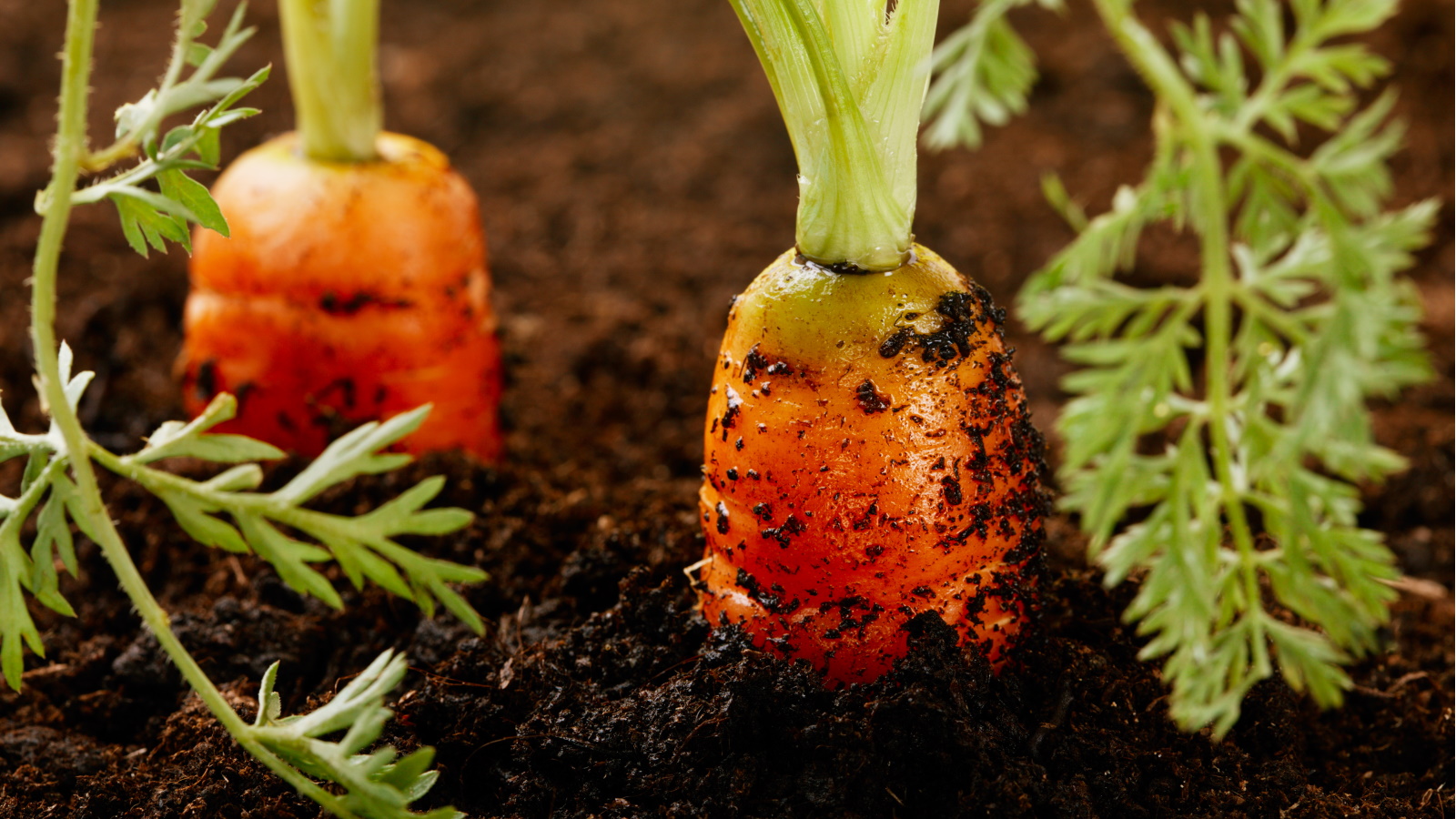

As someone who lives in an apartment, with zero outdoor space, I'm always looking for new ways to garden indoors. That's why I was excited to learn it's possible to grow some classic vegetables indoors, and carrots are apparently among some of the easiest to try.
It's no secret that growing carrots is straightforward and it's even one of the best vegetables to grow in pots. Growing them indoors isn't much more difficult. Unlike growing some vegetables that require a vast space and higher temperatures, it's pretty easy to create the perfect environment for carrots to grow indoors.
There are a few key things to keep in mind, however, if you want to have a successful indoor crop. I've spoken with vegetable growing experts and compiled a simple guide to growing carrots indoors, so that you can grow your own from the comfort of your kitchen.
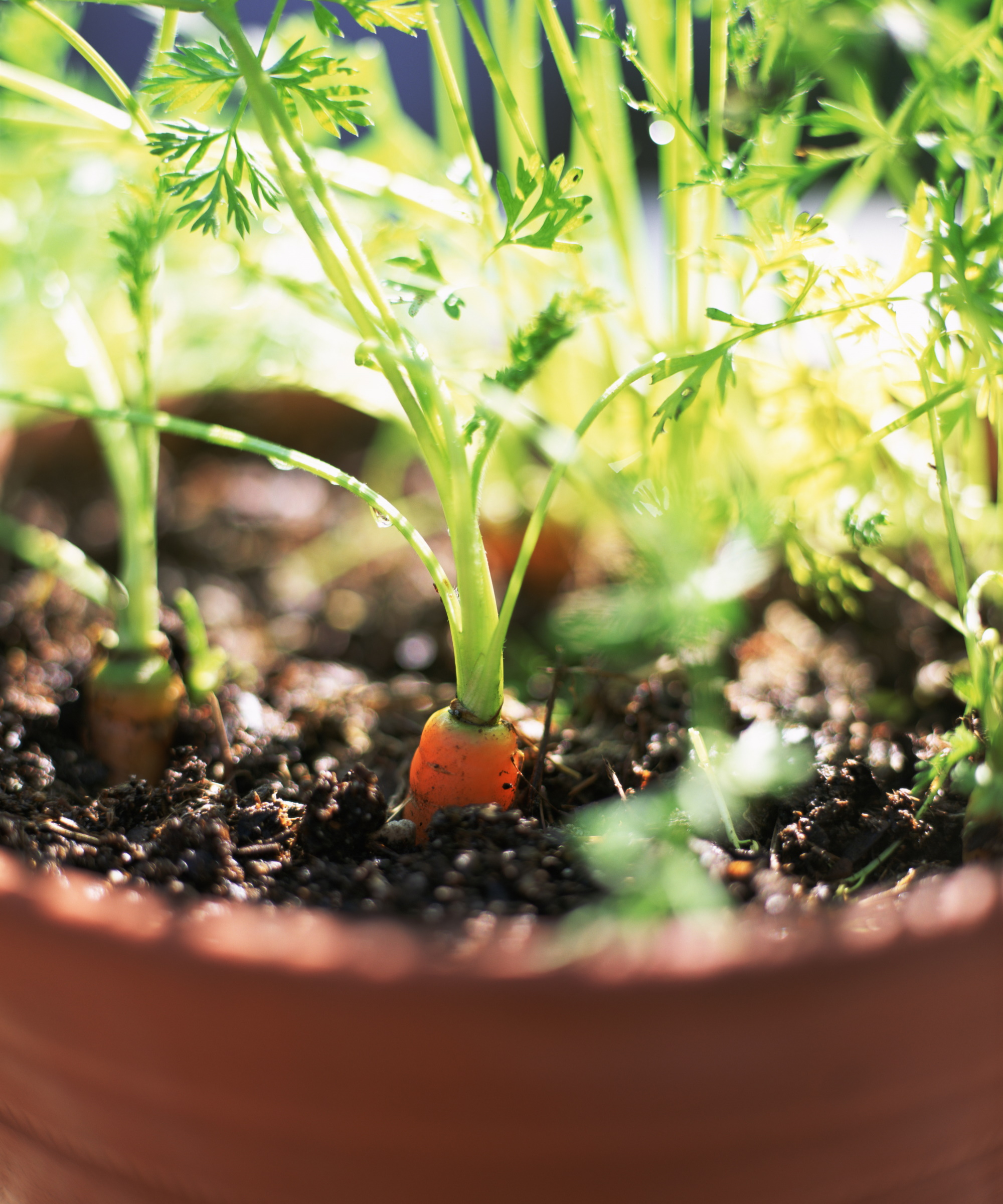
5 tips for growing carrots indoors
Carrots grow well outdoors across US hardiness zone 4 to zone 8, but choosing to grow them indoors makes it much easier to get a good harvest wherever you are based. Nevertheless, there are still a few things you need to do to ensure carrots can grow indoors successfully. Here's what the experts suggest.
1. Choose a large container
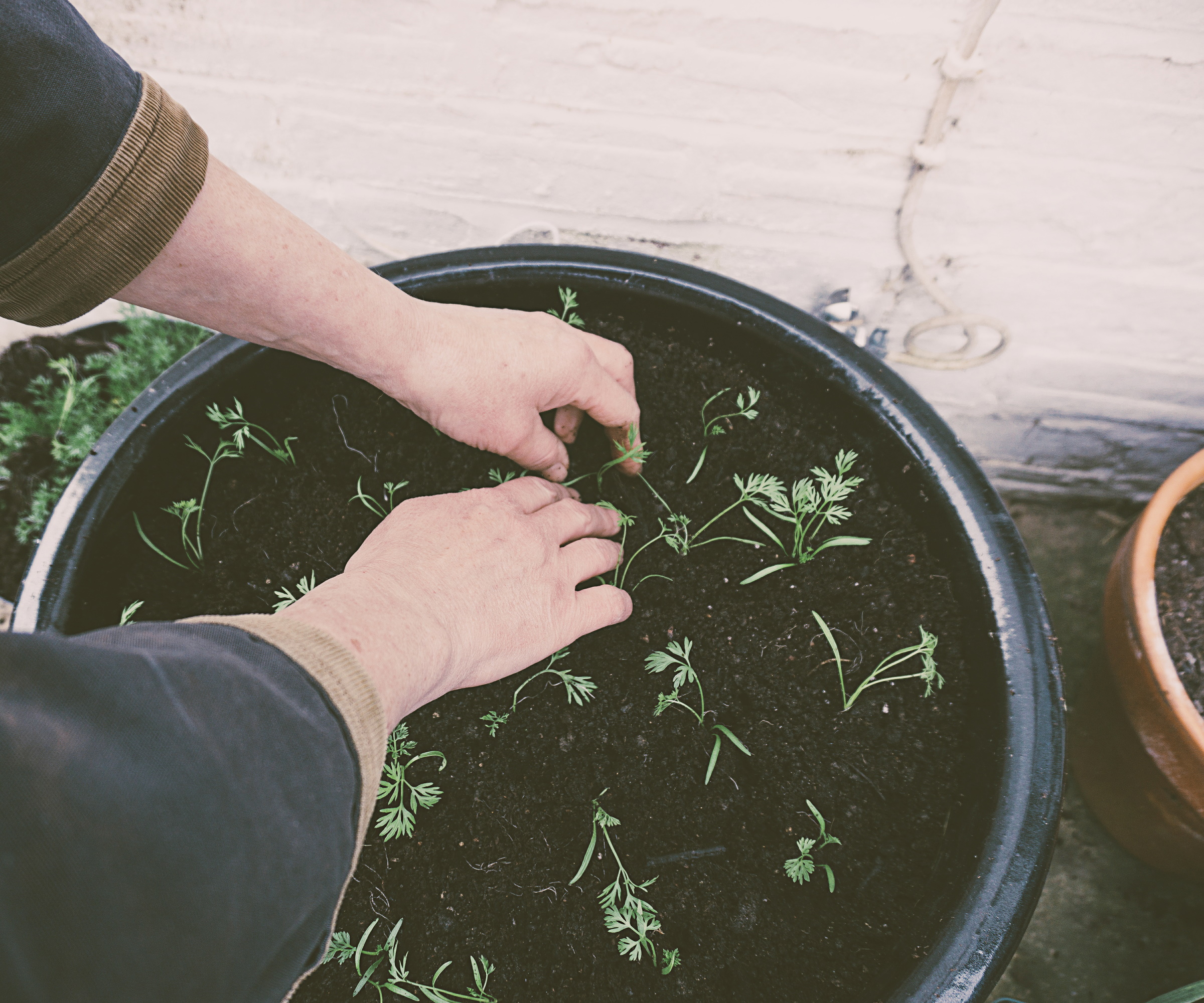
It's no surprise that you need to select a container large enough to house your growing carrots. Just like growing carrots in containers outdoors, you need to take into account the variety of carrot you are trying to grow when choosing your container.
'You’ll need a deep pot for long carrots, but there are also several smaller varieties available. Look for the words 'short,' 'dwarf' or 'mini' in the variety name,' says Kathi Rodgers, CEO of Oak Hill Homestead.
It can be wise to opt for round and short varieties of carrots when growing in pots and purchasing an 18-inch pot, available at Amazon, is a safe choice of container.
Design expertise in your inbox – from inspiring decorating ideas and beautiful celebrity homes to practical gardening advice and shopping round-ups.
No matter which carrots you are growing indoors, take care not to plant them too close together when sowing your seeds indoors.
'Carrot seeds are tiny and can be hard to plant with proper spacing, but you can thin them later if needed,' says Kathi. The plants should be 2-3 inches apart, although more space will give your carrots more room to develop larger roots,' she adds.
Make sure to sow your carrot seeds about half an inch deep in well-draining soil.

Kathi Rodgers is the CEO and writer at Oak Hill Homestead and the voice behind HOMEGROWN: Your Backyard Garden Podcast. Founded in 2006, Oak Hill Homestead is where Kathi teaches new gardeners, goat owners and folks interested in living a more self-reliant life how to dig in and grow their dreams.
2. Place your container in a sunny spot
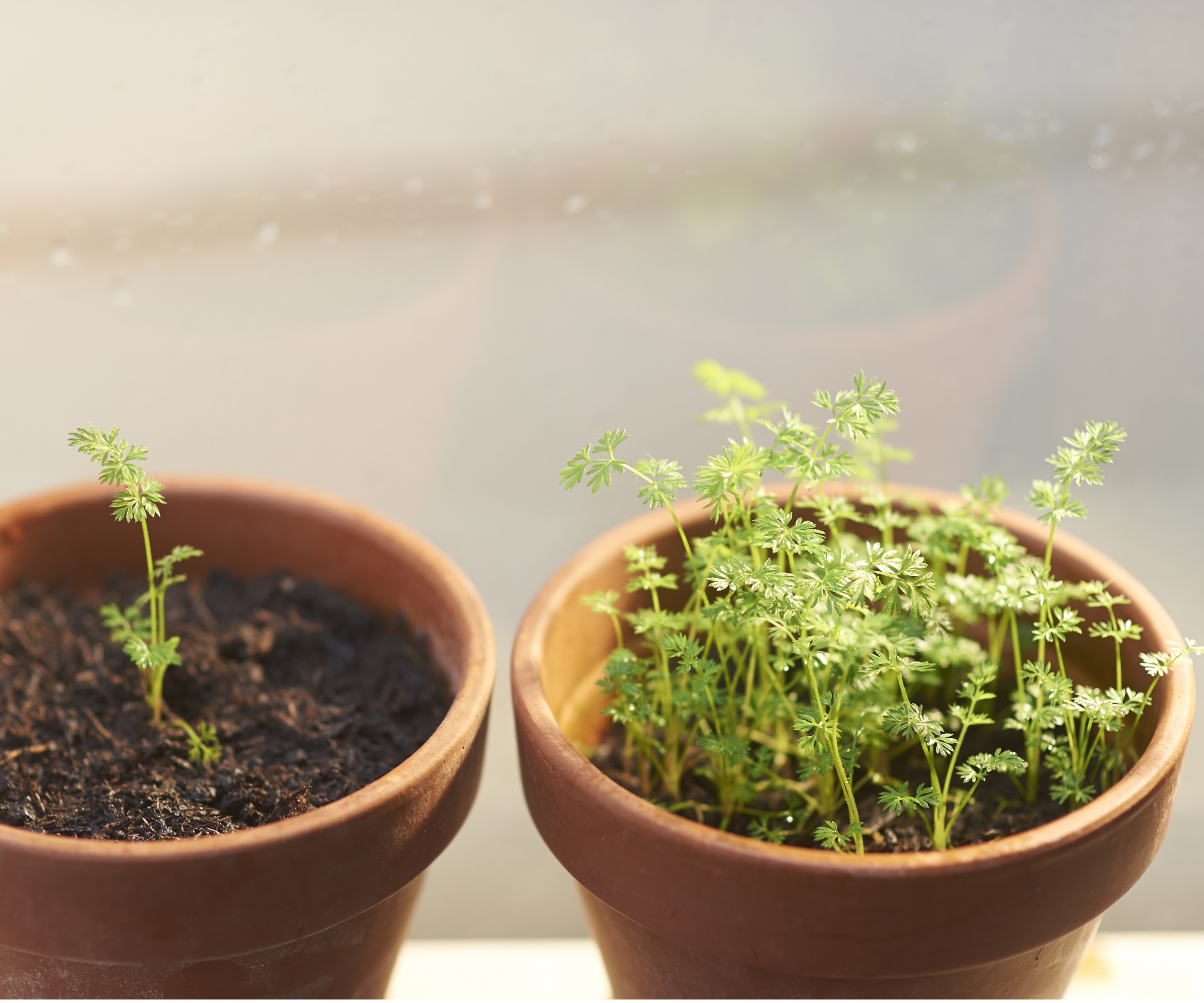
Once your carrot seeds have been sown, it's time to place your container in the right spot in your home. This is where growing carrots indoors can prove challenging, as your container will need to live somewhere sunny.
'Carrots need at least six hours of sunlight daily but prefer 8-10 hours. With less light, it will take longer for the carrots to mature and they may be smaller in size,' says Kathi.
A bright conservatory or near a south-facing window in summer would be an ideal place to house your carrot container. However, if you struggle to get lots of sun exposure in your home, or if it's a cooler season, don't panic.
'You can use a grow light if you don't have a sunny spot indoors,' says Annette Hird, expert gardener at Easy Urban Gardens.
There are plenty of grow lights available, like this one from Amazon. It's a good idea to use grow lights when you can't provide sufficient lighting for young seedlings. Using one with a timer can ensure your carrot seeds receive the right amount of light, as well as a period of darkness - both of which are essential for germination.
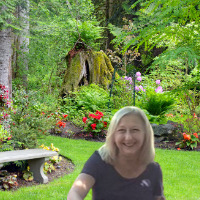
Annette Hird has an Associate Diploma in Horticulture and is an urban gardening expert. She has worked as a professional propagator and managed, maintained and improved many urban and rural gardens. She also enjoys growing her own fruit, vegetables, herbs and flowers as well as many different types of ornamental plants.
3. Keep room temperatures cool
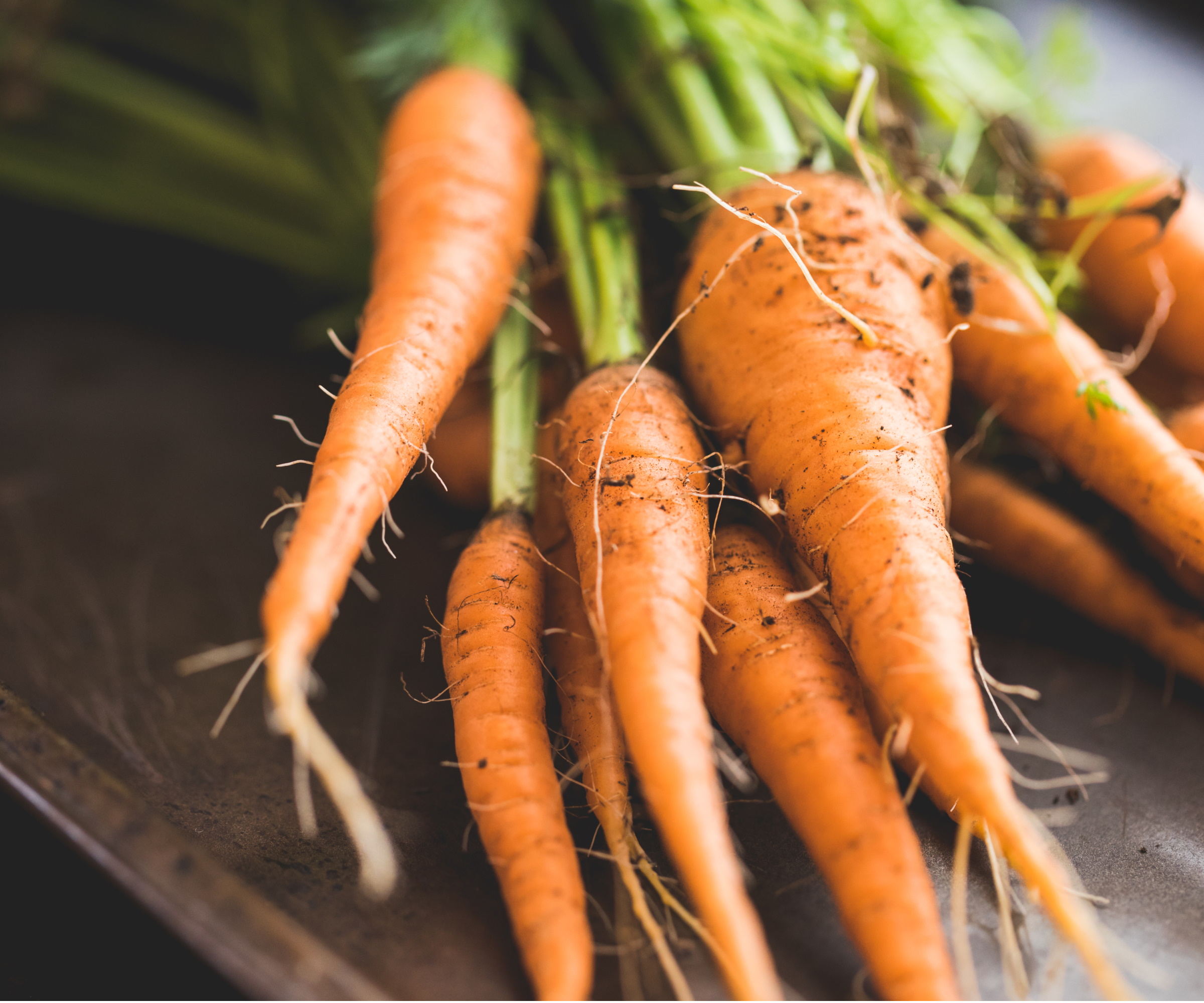
While some vegetables thrive in hotter temperatures, like growing tomatoes, carrots grow well in average room temperatures.
'Carrots are a cool weather crop and enjoy cooler temperatures. Your home’s normal temperature is also comfortable for carrot plants,' explains Kathi. 'A temperature of 55-75°F is ideal,' she adds.
In fact, growing carrots in warmer temperatures can affect the taste of your crop, making it more bitter than sweet. Nevertheless, the best thing to do it check the temperature requirements of the variety of carrot you are growing and keep it in an environment as close to that as possible.
You can monitor your room temperature for your carrots, and other plants in your home, using this thermometer from Amazon which also measures humidity levels.
4. Cover the container to help seeds germinate
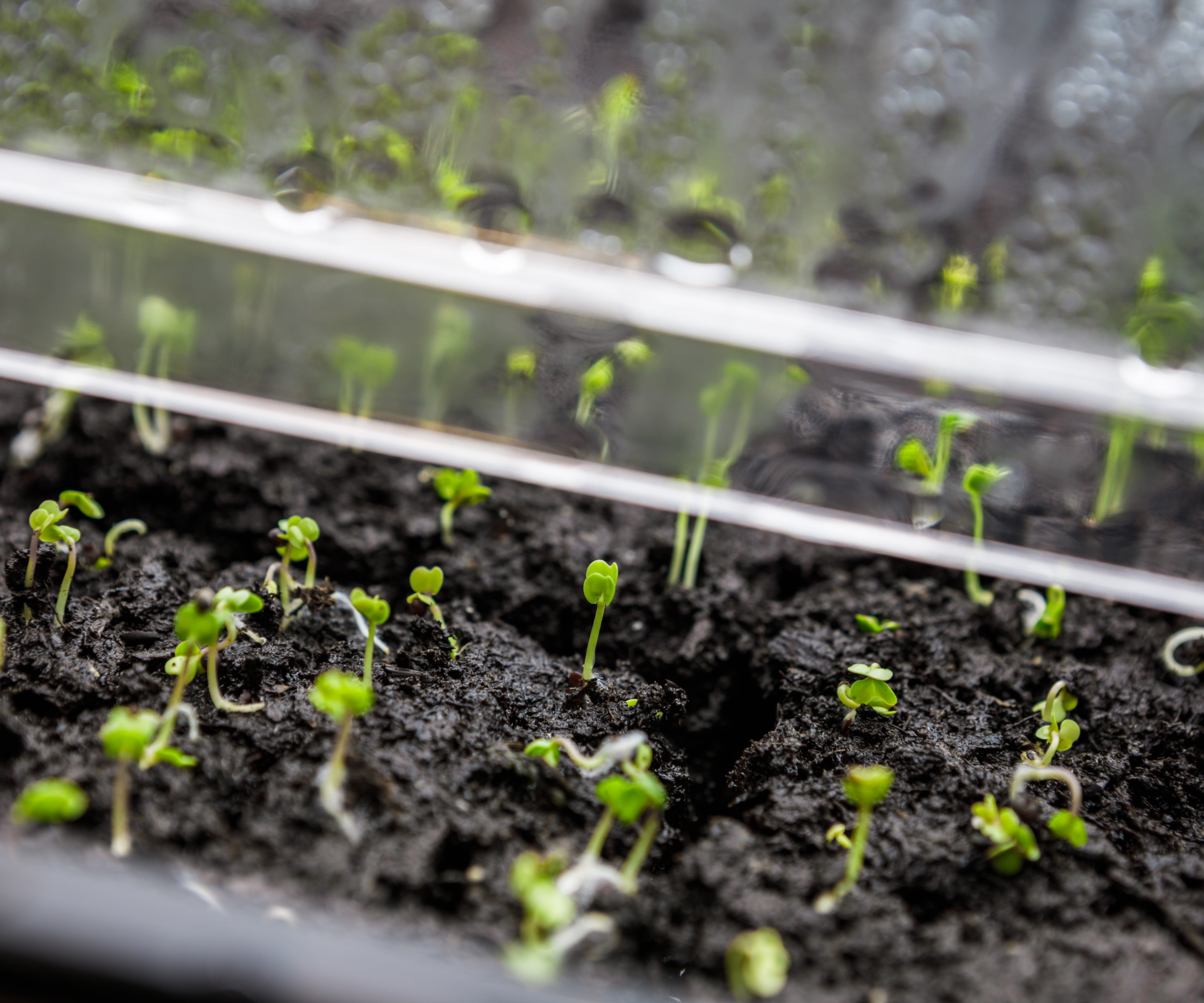
Humidity is another factor to take into account when growing carrots indoors, as higher levels help the seeds germinate. For this reason, you may want to use an indoor growing system like this humidity dome from Amazon.
'Carrot seeds can be tricky to germinate, so covering the pot with a dome or even plastic wrap until the seeds sprout can help to keep moisture in the soil where the seeds need it,' says Kathi.
Make sure to open your humidity dome, or use one with a ventilation system, to ensure there is plenty of airflow to reduce the build-up of excess moisture and fungal diseases. This is something important to keep in mind when making a DIY indoor greenhouse.
You should also ensure you keep moisture levels up by watering your seedlings and not letting it dry out entirely - a common seed sowing mistake. 'Carrots need plenty of moisture but the soil needs to drain freely each time the plants are watered,' notes Annette.
5. Move top soil to allow carrots to expand

One thing that will help the growth of your indoor carrots is making more room for them as they get larger.
'After carrots are well established, move the top soil away from the root with your finger and give the carrot room to expand,' advises Kathi.
While it won't be a disaster if you don't take this step, you might find that your indoor-grown carrots quickly run out of room to grow in their container.
That's why starting with a large container is wise. 'You need a deep pot to accommodate the tap root growth otherwise your carrots will be stunted,' says Annette.
It's also best to avoid transplanting the seedlings into a larger container because carrot roots can become damaged easily and it can result in your carrots growing wonky rather than long and straight.
FAQs
How long will it take before indoor carrots are ready to harvest?
The key to knowing when to harvest carrots is observing their roots and color. Carefully loosen the soil around the carrot and when you see that the roots are around finger-length, as well as the top of the carrot being orange, it's time to harvest them. On average, it takes between 3-4 months for carrots to grow after seeds have been sown.
Should I fertilize carrots I grow indoors?
It can be wise to fertilize carrots you grow indoors once a week to help with healthy growth. Using a carrot fertilizer, available at Amazon, is a good choice. Make sure not avoid fertilizing mistakes by not feeding your carrot plants too often, as it could cause root burn.
Carrots are a good vegetable to start with when experimenting with an indoor vegetable garden. By providing just some essential care and creating the right growing environment, you can have indoor-grown carrots in just a few months.
Check out our expert guide to other vegetables you can grow indoors. And if you're looking for something fun to do with children or want to make use of your food scraps, try growing carrots from carrot tops.

Tenielle is a Gardens Content Editor at Homes & Gardens. She holds a qualification in MA Magazine Journalism and has over six years of journalistic experience. Before coming to Homes & Gardens, Tenielle was in the editorial department at the Royal Horticultural Society and worked on The Garden magazine. As our in-house houseplant expert, Tenielle writes on a range of solutions to houseplant problems, as well as other 'how to' guides, inspiring garden projects, and the latest gardening news. When she isn't writing, Tenielle can be found propagating her ever-growing collection of indoor plants, helping others overcome common houseplant pests and diseases, volunteering at a local gardening club, and attending gardening workshops, like a composting masterclass.